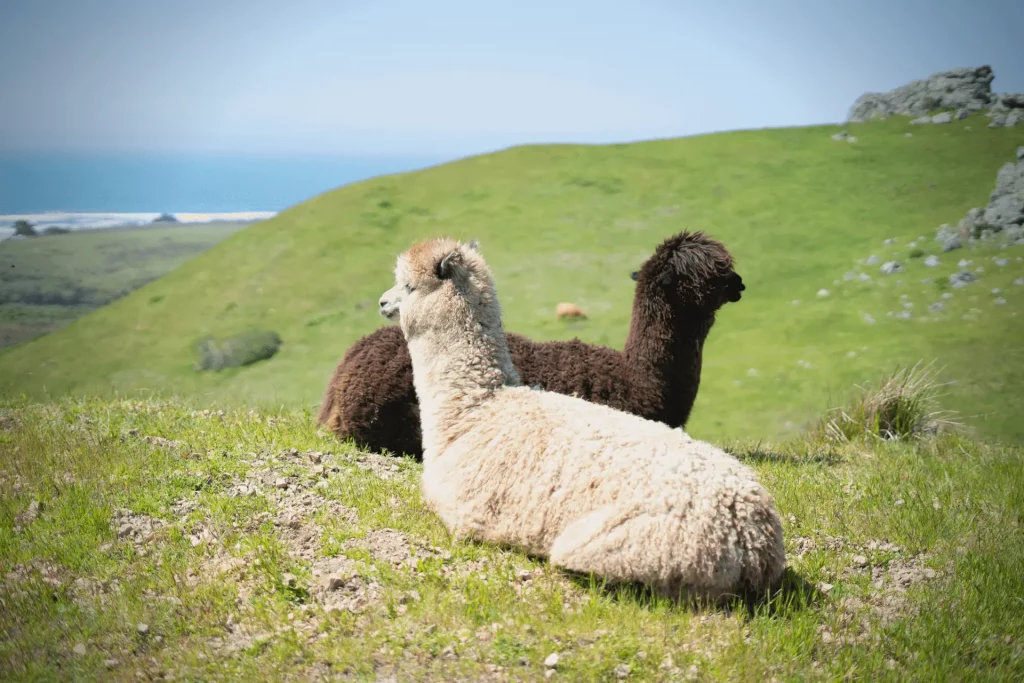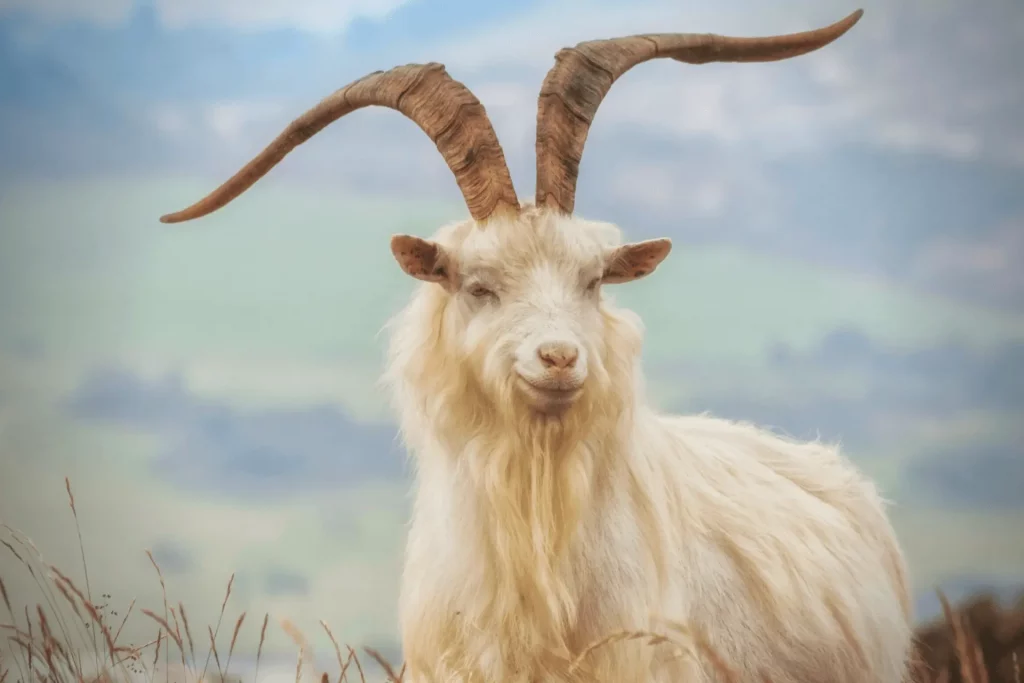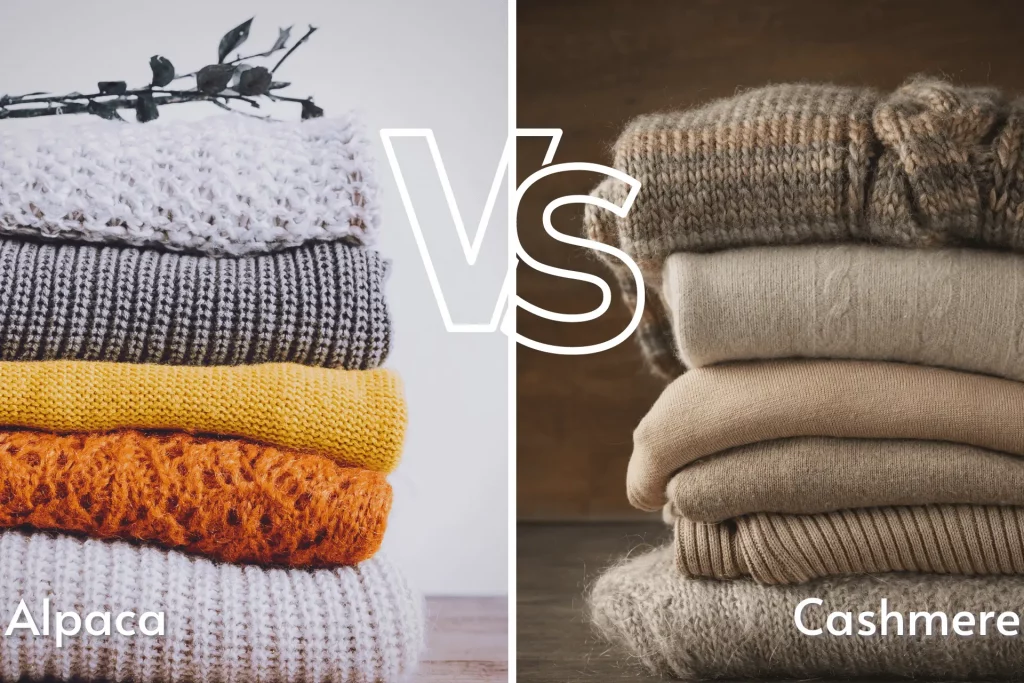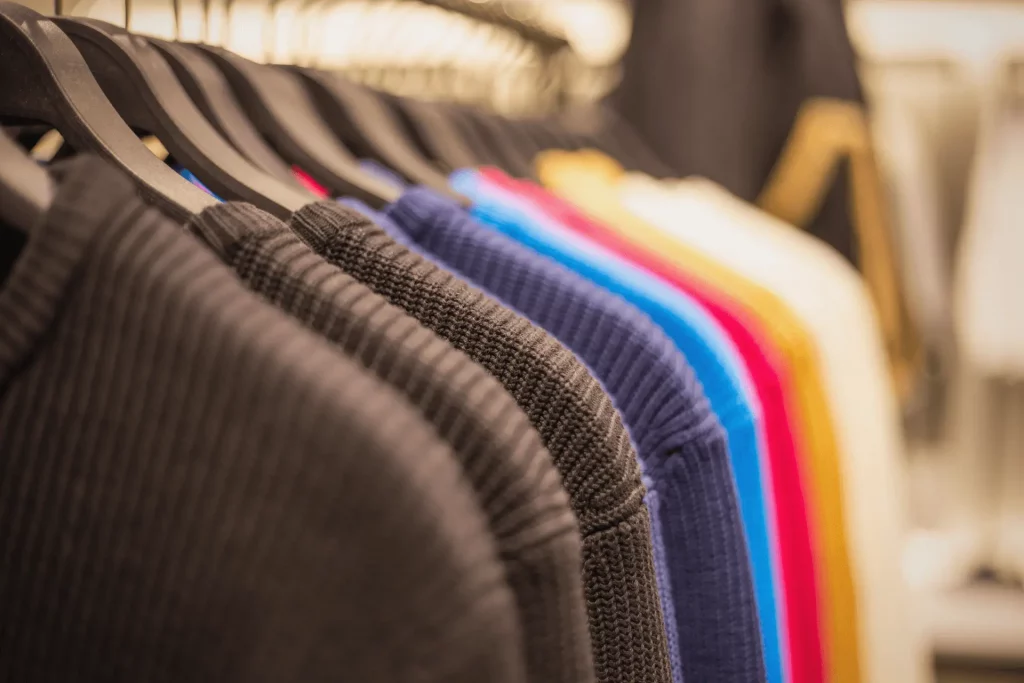Alpaca and cashmere wool are two of the most well-known types of natural wool available today, so let’s talk about them. These two materials are probably not new to you if you have the same appreciation for natural materials that we have.
Cashmere and alpaca are two of the natural fibers considered of the highest quality. These fibers are also noted for being hypoallergenic and soft, and luscious. What distinguishes alpaca from cashmere when it comes to the fibers they produce?
Cashmere is obtained from the hair of Kashmir goats, whereas alpaca fiber is obtained from the hair of alpacas. Both wool and fur are well-known for their opulently plush texture and ability to retain heat. Cashmere is even finer than alpaca, although it is more fragile than alpaca. Alpaca is more durable and even better at insulating.
You have heard of the names, but are you familiar with the history behind alpaca and cashmere and the qualities that distinguish each type of material? This post will help you understand Alpaca and cashmere wool if you are trying to decide what kind of wool to use for your next project and are having trouble deciding between the two.
Table of Contents
What Kind of Wool Is Alpaca?

The soft, luxurious fiber known as alpaca fleece originates from alpacas, camelids native to South America. In the more recent decades, people have begun to adopt these cute and friendly animals as pets, which has resulted in their spread over the world. Virtually the entire world’s supply of alpaca fleece is still nearly entirely produced in Peru.
The alpacas that live in the highlands of South America have coats that are naturally quite dense and fuzzy, which serves to insulate them from the extremely cold temperatures.
It is not an exaggeration to say that this particular type of wool is the kind of fleece that is the warmest on the entire planet. Any yarn will feel softer and warmer because of the microscopic air pockets contained within its strands. This is in addition to the natural qualities of yarn to be warm and soft.
The shearing procedure that farmers use to gather this wool is quite similar to the shearing process used for sheep. While two or three persons hold onto the alpaca, another user holds special shears to cut away the whole coat of the alpaca in one continuous motion.
Because it takes an alpaca that long to develop its coat to the required length of five to ten inches, this labor-intensive operation is only done once a year. The coat length that is sought ranges from five to ten inches.
After the shearing has been completed, the fleece must go through hand carding, spinning, and washing. After that is finished, the farmer sends it off to a producer or designer, converting it into garments, blankets, and other luxurious stuff!
This procedure takes a significant amount of time and work, and the fact that alpacas are uncommon contributes to the increased cost of the fleece. There will also be a difference in pricing based on the alpaca breed that the wool originated from and whether or not it was gathered in Peru.
Suri alpacas in Peru provide the highest-quality and most costly kind of alpaca wool. If you are interested in the wool of the greatest possible quality, you may also seek a description of “baby alpaca.” This refers to the finest and freshest fleece extracted from an alpaca’s coat. It does not imply that the wool originated from a young alpaca.
The price of plain alpaca yarn can range anywhere from $100 to $150 per pound. Items of clothing, such as scarves and sweaters, have a high price tag if they contain one hundred percent genuine alpaca wool. For example, if you want to buy a scarf made of alpaca, you need to budget at least one hundred dollars.
Experience the warmth and softness of cashmere apparel this winter by choosing from our tested and reviewed selection of the best cashmere scarves and sweaters. Shop now for the ultimate luxury.
What Exactly Is Cashmere?

Cashmere is obtained from the soft undercoat of Hircus goats, sometimes known as “Kashmir” goats. These goats are native to Tibet, Mongolia, and certain regions of Afghanistan and India.
Many of these unique goats require a significant amount of wool to produce a cashmere product, so cashmere is a costly and luxurious material.
The majority of the cashmere produced now originates from the Gobi desert, Mongolia, in China. It takes many people physically combing the under hair off of the goats to harvest the wool. In most cases, this occurrence takes place during the warmer months of spring, when the goats start to shed their winter coats.
Following this step, the loose wool is sent to a specialized facility where it is cleaned and organized. It is sent worldwide to different factories so that it may be transformed into yarn, sweaters, and socks!
Looking for soft, comfortable socks that won’t irritate your feet? Try our tested Best Picks of Cashmere Socks for ultimate warmth and comfort.
Due to the difficult and time-consuming nature of the procedure, there is only a limited quantity of cashmere available for purchase each year. The amount of cashmere wool sold each year is less than two percent of the total amount of sheep wool bought and sold each year.
However, in recent decades, some manufacturers have begun using cheaper fibers as filler in their goods that they label as being made of “cashmere.” This mass-produced variant of cashmere has a substantially lesser quality than the original, but it also makes the material available at more reasonable rates.
How can you determine whether or not a product contains genuine premium cashmere? You always look at the label provided by the manufacturer. It would help if you didn’t settle for anything less than cashmere made entirely of cashmere.
You may also determine the number of threads twisted together to create each yarn, which results in the fabric having a softer texture. The number of individual threads twisted together to form a single strand is referred to as the “ply” of the yarn.
You shouldn’t be satisfied with yarn that only has one ply since the quality will be lesser than that of yarns with two or more plies. Two plies and above often indicate great quality.
You should also run a couple more tests if something goes wrong. To begin, run your fingers over the surface of the cloth to see whether or not it contains any loose hair pills or sheds. Genuine cashmere is made from the hairs combed out of goats who are shedding.
If the person who cares for goats decides to take a shortcut and trim the goats instead, the strands in the yarn would be significantly shorter and more prone to pilling.
Second, look for a weave that is not too tight. If you can see through the yarn, this indicates that the structure of the goods is subpar and that it will not hold up well over time. In a perfect world, luxury cashmere products would have a tight weave.
Check the price tag as a last and decisive test! The majority of pure cashmere is purchased by couture designers, who use it to make sweaters that retail for up to $1,000 each. If you see a cashmere item being sold for less than $200, there is a good chance that it is not made of genuine cashmere.
The Key Differences Between Alpaca Vs. Cashmere:

Now that you are familiar with the histories of cashmere and alpaca, let’s examine some characteristics shared by each of these materials to see how they stack up against one another.
1. Softness:
Cashmere and alpaca wool both have a well-deserved reputation for being sumptuous and gentle to the touch. Because cashmere strands are finer and more delicate than alpaca fibers, cashmere may give the impression of being softer than alpaca.
On the other hand, the difference is typically not a huge one. The majority of people cannot discern a significant difference in the two materials’ levels of gentleness. It is also possible to compensate for any difference in softness by selecting baby alpaca fibers or a particularly fine grade of Suri alpaca fibers.
2. Warmth:

Although cashmere is often warm and cozy, it cannot compare to alpaca’s coziness and warmth. As was just said, because of the one-of-a-kind structure of the alpaca fiber, the material receives an additional layer of insulation.
As a result, the material is very good at keeping in the body’s natural heat. Because of this quality, alpacas are highly prized in many areas that experience cooler conditions.
Each of these fabrics is on the level when it comes to breathability. Because it has natural air spaces, alpaca is a material that can be both lightweight and warm without being overly stuffy. Similarly, cashmere wool is composed of extremely fine and short fibers, which enable your skin to remain breathable.
3. Durability:
When your fabric develops pilling, little raised bumps appear all over the surface, giving the impression that the fabric is old and worn. Pilling is more likely to develop on clothes constructed using fibers that are shorter in length. This indicates that cashmere has a greater propensity to pill than alpaca does.
If you have cashmere and alpaca in your wardrobe, you will notice that one material is significantly more long-lasting than the other. Because of its reputation for being exceedingly fragile, handling cashmere requires that you use extreme caution. Even though it is warm, due to the sheer quality of the material, it should not be used as an outer layer.
On the other hand, alpacas are extremely resilient and can survive practically any condition. It is robust and long-lasting, with excellent resistance to wrinkling and general wear and tear. Because of this, winter jackets and other pieces of outdoor apparel made from alpaca are quite desirable. You won’t be exposed to the elements nearly as much as you would be without it.
Say goodbye to pilling wool clothing! Our expert tips and tricks are specifically designed to prevent pilling and keep your clothes looking like new. Learn more now.
4. Workability and Characteristics of the Material:
The alpaca yarn is smooth and simple to work with. Because it has very little to no inherent tooth, alpaca is an excellent choice for even smooth textures and color work because of its versatility.
Working with alpaca yarn in a DK or bulky weight is common practice, which contributes to improved stitch definition. In general, alpaca is an excellent choice for making things like scarves, blankets, and clothing that do not require much shaping.
A little elasticity may be achieved with alpaca, and the knitted or woven fabric has a natural tendency to hang.
Because cashmere is so supple and delicate that it does not lend itself well to distinct stitch definitions, it is also capable of shedding a little more. In the same way as with alpaca, it is a good idea to choose stockinette and simpler stitch designs when working with cashmere. This will allow the inherent softness of the material or the color to take precedence over the stitch work.
5. Color:

Because alpaca and cashmere are so good at taking dyes, there is typically a wide range of pre-dyed hues available. However, alpaca fiber comes in many colors, ranging from whites, creams, tans, and browns, to grays and blacks. Some sources claim as many as 22 natural hues of alpaca fiber, with even more shades.
Sometimes the fibers are allowed to remain in their original state, which results in natural variance; however, each shade may also be colored on top, which results in even more dynamic effects. For example, black fibers take red dyes differently from cream fibers, expanding alpaca fibers’ color and tone choices.
White, beige, brown, grey, and black are the hues most commonly seen in cashmere; nevertheless, there is less variation in color between these shades than in alpaca fibers.
6. Care:
Even while alpaca is considerably harder and more long-lasting than cashmere, it is nevertheless strongly advised that you wash both of these fabrics by hand to ensure that they retain their suppleness and luscious quality for as long as possible.
Garments made of alpaca and cashmere should only ever be washed by hand in cold water with a gentle detergent. When you wash the clothing, be careful not to tug or twist it too vigorously since the friction might even form felt. Instead, soak the item in soapy water and then rinse it well until the water is no longer cloudy.
Simply pushing down on your clothes with a little bit of force can eliminate any extra water. Do not twist it because the size and form will be altered. You might also use a dry towel to absorb the extra water in this situation. After that, you may put the item out to dry on a level surface.
Do not hang your wool clothing on a hanger, whether the wool is wet or dry; this might cause the garment’s form to become misshapen. Instead, fold it up and put it in a dry spot in your closet where it can be easily accessed.
Dry cleaning is an alternative to hand washing suitable for cashmere and alpaca wool items. Dry cleaning is a fantastic alternative if you do not like to wash your garments by hand.
Because alpaca wool is a more long-lasting material, you may also place it in a washing bag made of fine mesh and wash it in cold water using the gentle cycle. After that, you can dry the garment by laying it out in the sun. Not all cashmere can be washed in a cold cycle in the washing machine; thus, it is best to handwash cashmere to protect it and extend its lifespan.
Don’t know how to care for your cashmere products? No problem! Our proven ways can help increase their lifespan. Learn how to care for your cashmere with us.
7. Cost:

In most cases, you may anticipate that the price of cashmere will be somewhat more than the price of alpaca. This distinction is mostly down to the fact that alpaca wool is not nearly as widely recognized as cashmere, which has been synonymous with luxury for a long time.
The price of either type of wool might vary greatly depending on the quality of the sold item. When selling cashmere sweaters, mainstream merchants almost probably utilize a mixed material that does not contain cashmere that is made up of one hundred percent of the total weight of the sweater. Because of this, the price is drastically reduced.
You may also discover alpaca sweaters created with extremely high-quality fibers hand-combed in Peru. The price of these sweaters could very well reach the stratospheric levels that are generally reserved for cashmere.
The matter is that unprocessed examples of both types of yarn are considered luxury goods. To have your hands on an alpaca or cashmere goods, you will need to invest many hundreds or perhaps several thousand dollars.
Alpaca Benefits and Drawbacks:
Let’s wrap off our discussion by taking a quick look at the benefits and drawbacks of alpaca wool. It is:
- One of the types of wool known for its exceptional warmth.
- Very long-lasting wool with high tensile strength and the ability to resist pilling.
- The yarn is softer than that made from Merino sheep, but it is quite as soft as cashmere.
- Much more environmentally friendly than cashmere.
- The fact remains that to reach customers, it must travel a significant distance, which hurts the environment.
- On the other hand, because there are many fewer alpacas worldwide, this material is extremely hard to get.
Cashmere’s Benefits and Drawbacks:
The benefits and drawbacks of cashmere are discussed in the following sentence. It is:
- Because it has the finest fibers of any sort of wool, it is commonly referred to as the world’s softest wool.
- Extremely warm while lightweight enough to be worn in various climates.
- The ultimate luxury wool that is more costly than alpaca has gained popularity in recent years.
- Does not employ environmentally responsible production processes.
- It has a shorter lifespan than alpaca and is more likely to pill.
Frequently Asked Questions:
Is it true that alpaca is superior to cashmere?
When compared to a sweater made of cashmere, one made of baby alpaca wool is superior in terms of its softness and comparison; the length of an alpaca fiber can range anywhere from eight to twelve centimeters, whereas cashmere threads are just four centimeters in length. Because of this, clothing made from alpaca fiber is more durable, and as a result, they last longer and are less likely to develop a pilling effect.
Is cashmere a more long-lasting material than alpaca?
And because alpaca fibers are more robust, they are also more water-resistant and long-lasting and keep their sheen for a far longer period than cashmere does, which tends to pill and have that worn appearance feel with time.
Is the texture of alpaca wool comparable to that of cashmere?
The primary distinction between alpaca and cashmere is that cashmere is characterized by a larger degree of flexibility. In contrast, alpaca is characterized by greater insulation and durability. Both sorts of wool are regarded as objects of high-end luxury.
Bottom Line:
Compared to cashmere, the fiber from an alpaca comes out on top in terms of warmth, softness, and sheen. On the other hand, this option frequently results in higher costs. How about some advice on what you should make for your next knitting project? It is dependent on your requirements and inclinations.
You should go for alpaca yarn if you want the warmest and most comfortable option. Cashmere can be a better alternative for you if you seek something that will keep you warm but is more affordable than other options. We hope you enjoy trying out different knitting designs, regardless of the fiber you go with.

